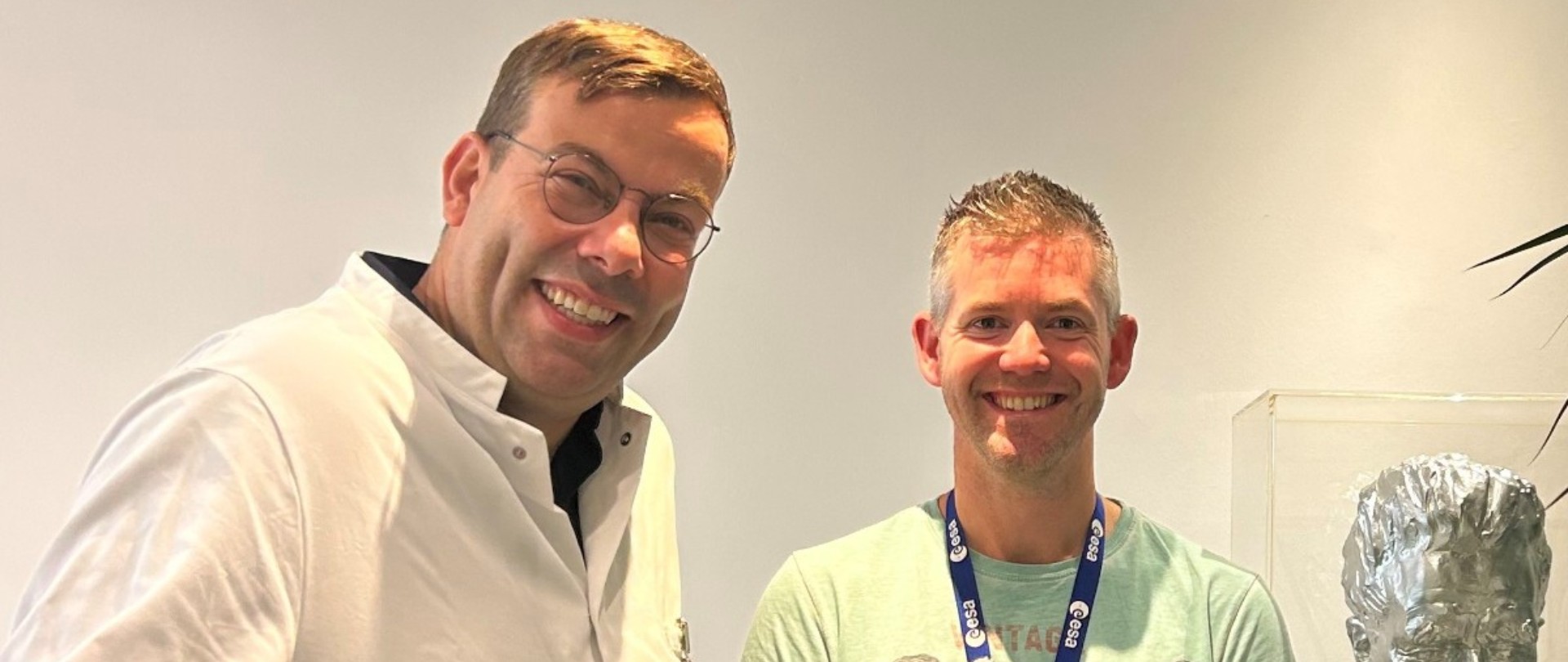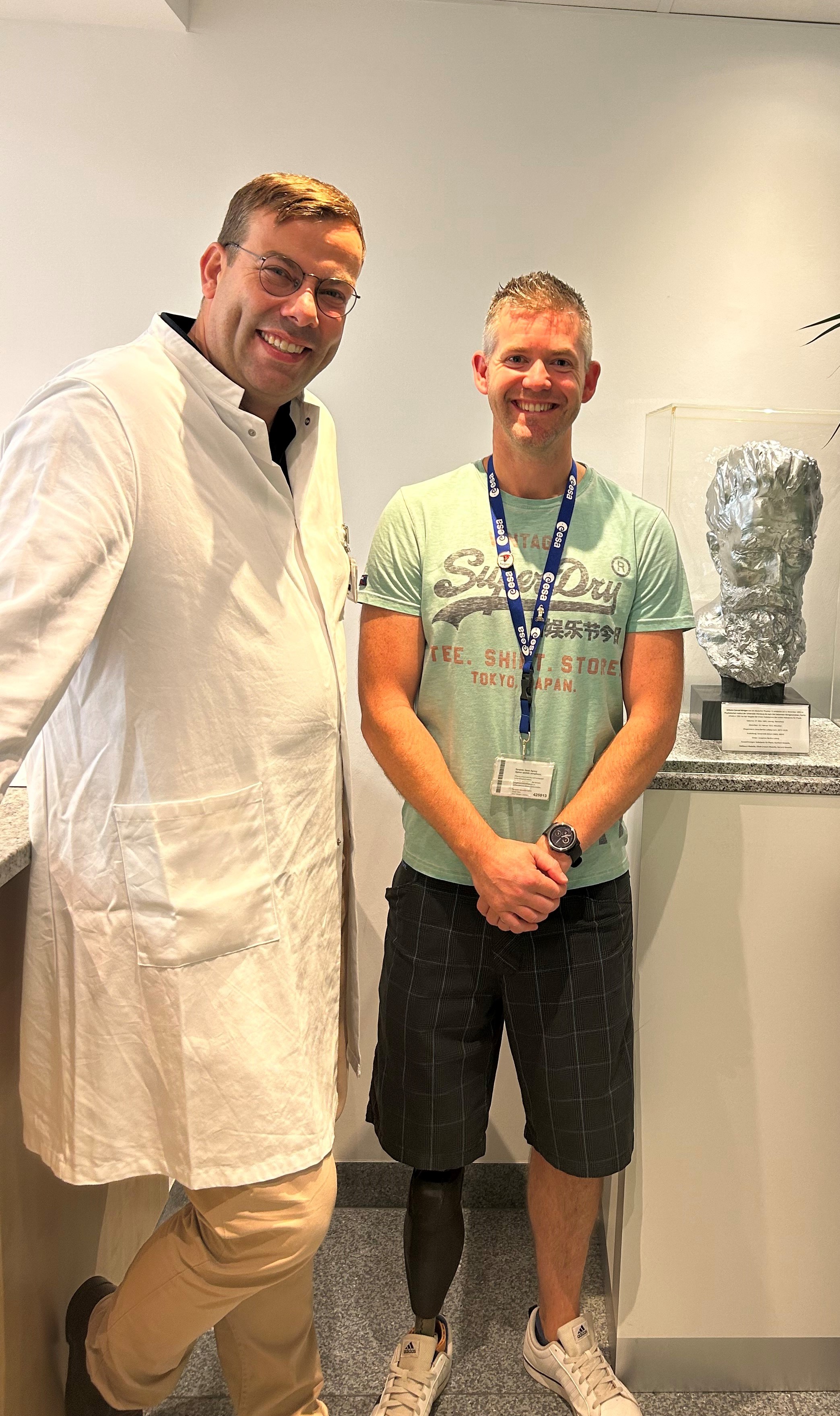Growing up in Surrey, England, John McFall didn’t think he had the academic background to fulfill his dream of being a doctor, so he decided not to pursue a medical degree. Then, when he lost his right leg at 19 in a motorbike crash, his plans to join the army were derailed. McFall had no idea at the time that his life-changing accident would help him achieve new heights — literally — first as a Paralympic medalist and today as potentially the first professional astronaut with a physical disability.
McFall had been an athlete in high school, and something of a daredevil — which led to the 2000 accident in Thailand that took his leg just above the knee. He started running during rehabilitation and ultimately won a half dozen medals in 100- and 200-meter sprints between 2004 and 2007. As his athletic career was winding down, McFall reconsidered his future and realized that becoming a physician was a real possibility.
“I started thinking about what I would have liked to do when I was 15, 16, and the answer was medicine,” he says. “Day one of medical school, I was in the dissection room dissecting bodies, and I was like, ‘Yeah, orthopedics is for me.’”
‘You Can’t Not Do It’
McFall became a member of the Royal College of Surgeons in 2016. Last year, he was nearing the end of his orthopedic surgery training in the Wessex Deanery, in the U.K., when a friend told him the European Space Agency (ESA) wanted to send people with physical disabilities to space. Immediately intrigued, McFall looked into the program and decided it “ticked all my boxes.”
"There’s the academic challenge, the physical challenge, the emotional challenge, the adventure,” he says. “I also thought it was a tremendous opportunity to send such a strong message about what people with physical disabilities are capable of doing. I felt compelled to apply.”
Before submitting an application to the ESA, McFall talked it over with his wife, parents, and siblings, weighing the potential impact on his surgery career and his three young children. Initially his wife thought he was being ridiculous. But after reading about the ESA program from the application handbook he strategically left lying around the house, she, too, concluded that he needed to become an astronaut.
Put to the Test
So, McFall put his career on hold and moved to Germany last summer. He’s about a third of the way through a feasibility study to determine whether it would be technically possible for him to live and work for six months on the International Space Station (ISS), as a professional astronaut and fully integrated ISS crew member. Once the study is completed, McFall could move on to astronaut training if assigned to a mission, but it is not expected that he will launch to space before the end of 2027.
“We need to be able to show that I can undertake any of the duties required of the crew,” McFall says. “I and my prostheses are undergoing a rigorous testing and certification process.”
A lot of that testing means demonstrating that McFall is physically up to the challenges of living in space, says Martin Bansmann, a professor in radiology and leading physician at the German Hospital Porz am Rhein which works with ESA to certify astronauts. Bansmann’s pioneering research at the intersection of medical imaging and aerospace medicine has helped develop healthcare protocols for all ESA astronauts, as well as pilots in the German Air Force, ensuring their optimal health and performance in extreme environments.
From left: Dr. Martin Bansmann and John McFall
“These astronauts and pilots, they are young and healthy, but what we don’t want is something unexpected to cause a problem, so that’s what we’re looking for,” Dr. Bansmann says.
The Picture of Health
Using advanced medical imaging technologies, including magnetic resonance imaging (MRI), CT scans, X-ray, and ultrasound, Dr. Bansmann and his team can evaluate various physiological parameters to find anything that could endanger the astronauts, the pilots, or their mission. Bansmann uses equipment made by GE HealthCare, including Revolution Apex CT and Signa Artist MRI, to comprehensively evaluate pilots and astronauts. These imaging modalities provide detailed information about different organ systems, allowing healthcare professionals to assess their overall health status. Using artificial intelligence, the machines can help detect minute irregularities, such as irregular heartbeats, while also offering state-of-the-art images and reduced scan times. That means healthcare providers get clear and accurate imaging results promptly, allowing for timely medical intervention if necessary. At the same time, CT radiation dose can be significantly reduced by the AI technologies.
Dr. Bansmann is also working to compile a deep learning–powered database using imaging, clinical data, reports, and other medical data, which he hopes will one day help him understand which finding or combination of findings might predict whether or not an astronaut or pilot is medically suited for the job.
“Right now, we don't know what might be very relevant, but we hope that in the future we can help prevent problems from developing, even if they don’t end up becoming a pilot or astronaut,” he says. “We are connecting dots between the different aspects of our data, which is a very fascinating long-term project.”
McFall already has undergone extensive medical evaluations in Germany and at the Johnson Space Center, in Houston, to ensure his suitability for space travel. Of particular concern, for example, is degradation to his spine, which can happen to people who have lost a leg at a young age. So far, numerous MRIs and CT scans have found nothing to prevent him from becoming an astronaut.
“I feel really privileged to have been chosen to represent the European Space Agency and to represent Europe and the U.K. in this groundbreaking study and potentially this pioneering spaceflight,” McFall says. “I am really excited for the opportunity to go to space, but also for the platform to demonstrate and advocate for inclusivity.”


